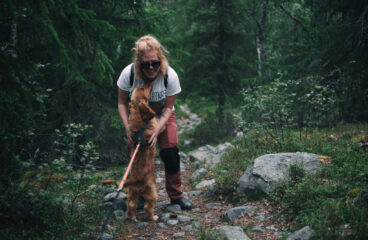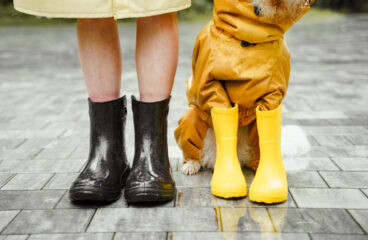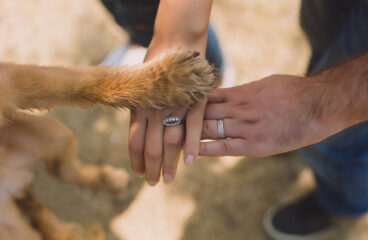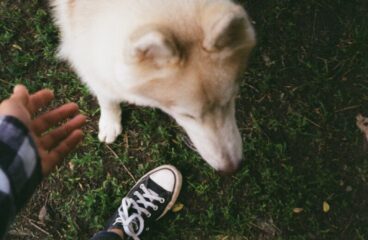
How To Keep A Dog’s Foot Bandage?
Keeping a dog’s foot bandage clean is an important part of caring for your pet. Bandages can become dirty and wet, which can lead to infection and other health problems. It is important to keep the bandage clean and dry to ensure your dog’s health and comfort. In this guide, we will discuss the best ways to keep a dog’s foot bandage clean and dry. We will also discuss how to change the bandage and when to seek veterinary care.
Table of Contents
How to Choose the Right Bandage for Your Dog’s Foot
When it comes to caring for your pup’s feet, it’s important to choose the right bandage. Whether your pup has a wound, an infection, or just needs some extra protection, the right bandage can make all the difference. Here’s how to choose the right bandage for your pup’s foot.
First, consider the size of your pup’s foot. You’ll want to make sure the bandage is big enough to cover the entire foot, but not so big that it’s uncomfortable or too loose. If you’re not sure what size to get, measure your pup’s foot and compare it to the size of the bandage.
Next, think about the type of bandage you need. If your pup has a wound, you’ll want to choose a bandage that’s designed to protect the wound and keep it clean. If your pup has an infection, you’ll want to choose a bandage that’s designed to absorb moisture and keep the infection from spreading.
Finally, consider the material of the bandage. You’ll want to choose a bandage that’s comfortable for your pup and won’t irritate their skin. Look for bandages made from breathable materials like cotton or gauze.
By following these tips, you can make sure you choose the right bandage for your pup’s foot. With the right bandage, you can keep your pup’s feet healthy and happy.
How to Properly Apply a Bandage to Your Dog’s Foot
If your dog has injured their foot, it’s important to properly apply a bandage to help protect the wound and promote healing. Here’s how to do it:
- Start by cleaning the wound. Use a mild soap and warm water to gently clean the area. Pat the area dry with a clean cloth.
- Apply an antibiotic ointment to the wound. This will help prevent infection and promote healing.
- Cut a piece of gauze or other absorbent material to fit the wound. Make sure it’s large enough to cover the entire area.
- Place the gauze over the wound and secure it with medical tape. Make sure the tape is not too tight, as this can cause discomfort.
- Wrap the foot with an elastic bandage. Start at the toes and wrap the bandage around the foot, working your way up to the ankle. Make sure the bandage is not too tight, as this can cause discomfort.
- Secure the bandage with medical tape. Make sure the tape is not too tight, as this can cause discomfort.
- Check the bandage regularly to make sure it’s not too tight or too loose. If it’s too tight, it can cause discomfort and impede circulation. If it’s too loose, it can slip off and leave the wound exposed.
- Change the bandage every few days or as needed.
By following these steps, you can help ensure that your dog’s foot is properly protected and can heal quickly.
How to Monitor Your Dog’s Foot Bandage for Signs of Infection
If your pup has a foot bandage, it’s important to keep an eye on it for signs of infection. Here’s how to monitor your dog’s foot bandage:
- Check the bandage daily. Make sure the bandage is still securely in place and that it’s not too tight or too loose. If it’s too tight, it can cut off circulation and cause pain. If it’s too loose, it can slip off and leave the wound exposed.
- Look for signs of infection. If the bandage is wet or damp, it could be a sign of infection. Also, look for any redness, swelling, or discharge around the wound.
- Smell the bandage. If the bandage has a foul odor, it could be a sign of infection.
- Check the wound. If the wound looks red, swollen, or has any discharge, it could be infected.
- Monitor your pup’s behavior. If your pup is limping, licking the wound, or seems to be in pain, it could be a sign of infection.
If you notice any of these signs, contact your vet right away. It’s important to treat any infection quickly to prevent it from getting worse.
How to Change a Dog’s Foot Bandage
Changing a dog’s foot bandage is a relatively simple process, but it’s important to do it correctly to ensure your pup’s comfort and safety. Here’s how to do it:
- Gather your supplies. You’ll need a pair of scissors, a new bandage, and some medical tape.
- Remove the old bandage. Carefully cut the old bandage away from the foot, being careful not to cut the skin.
- Clean the wound. Use a damp cloth to gently clean the wound and surrounding area.
- Apply the new bandage. Wrap the new bandage around the foot, making sure it’s not too tight.
- Secure the bandage. Use the medical tape to secure the bandage in place.
- Monitor your pup. Keep an eye on your pup to make sure the bandage is staying in place and that they’re not having any discomfort.
And that’s it! Changing a dog’s foot bandage is a relatively simple process, but it’s important to do it correctly to ensure your pup’s comfort and safety.
How to Keep Your Dog’s Foot Bandage Clean and Dry
Keeping your dog’s foot bandage clean and dry is essential for proper healing. Here are some tips to help you keep your pup’s bandage in tip-top shape:
- Change the bandage regularly. Depending on the type of bandage, you should change it every 1-3 days. If the bandage is wet or soiled, change it immediately.
- Clean the wound before applying a new bandage. Use a mild soap and warm water to gently clean the wound. Pat the area dry with a clean cloth or paper towel.
- Apply a thin layer of antibiotic ointment to the wound before applying the bandage. This will help keep the wound clean and prevent infection.
- Wrap the bandage securely but not too tightly. Make sure the bandage is not too tight, as this can cause discomfort and impede circulation.
- Use a waterproof bandage if possible. This will help keep the wound dry and prevent bacteria from entering the wound.
- Check the bandage regularly. Make sure the bandage is not too tight or too loose, and that it is not wet or soiled.
- If the bandage becomes wet or soiled, change it immediately. Wet or soiled bandages can cause infection and impede healing.
Following these tips will help ensure that your pup’s foot bandage stays clean and dry, and that the wound heals properly.
How to Prevent Your Dog from Chewing or Licking Its Foot Bandage
If your pup has a bandage on their foot, it can be difficult to keep them from licking or chewing it off. Here are some tips to help you prevent your pup from doing so:
- Distract your pup: If you notice your pup trying to lick or chew their bandage, distract them with a toy or treat. This will help keep their mind off the bandage and give them something else to focus on.
- Use a cone: A cone, also known as an Elizabethan collar, is a great way to prevent your pup from licking or chewing their bandage. It’s a plastic or fabric collar that fits around your pup’s neck and prevents them from reaching their foot.
- Use a bitter spray: Bitter sprays are designed to discourage your pup from licking or chewing their bandage. Simply spray the bitter spray on the bandage and it will make it taste unpleasant, discouraging your pup from licking or chewing it.
- Keep your pup busy: Keeping your pup busy with activities like walks, playtime, and training can help keep their mind off the bandage. This will help prevent them from licking or chewing it.
- Monitor your pup: Make sure to keep an eye on your pup when they’re wearing a bandage. If you notice them trying to lick or chew it, intervene right away and distract them with a toy or treat.
By following these tips, you can help prevent your pup from licking or chewing their foot bandage.
How to Know When It’s Time to Remove Your Dog’s Foot Bandage
When it comes to caring for your pup, knowing when it’s time to remove their foot bandage is an important part of the process. Here are some tips to help you determine when it’s time to take off the bandage:
- Check the bandage for signs of wear and tear. If the bandage is starting to fray or come apart, it’s time to remove it.
- Check the area around the bandage for signs of infection. If the area is red, swollen, or oozing, it’s time to take off the bandage and seek medical attention.
- Check the bandage for signs of irritation. If your pup is licking or chewing at the bandage, it’s time to take it off.
- Check the bandage for signs of healing. If the wound is healing and the bandage is no longer needed, it’s time to remove it.
- Check the bandage for signs of discomfort. If your pup is showing signs of discomfort or pain when the bandage is touched, it’s time to take it off.
If you’re ever unsure about when to remove your pup’s foot bandage, it’s always best to consult your veterinarian. They can help you determine the best course of action for your pup’s specific situation.
Conclusion
clean
To keep a dog’s foot bandage clean, it is important to keep the area around the bandage dry and clean. Change the bandage regularly and check for any signs of infection. If the bandage becomes wet or dirty, replace it immediately. If the bandage is too tight or causes discomfort, contact your veterinarian for advice. With proper care and attention, you can ensure that your dog’s foot bandage stays clean and healthy.




